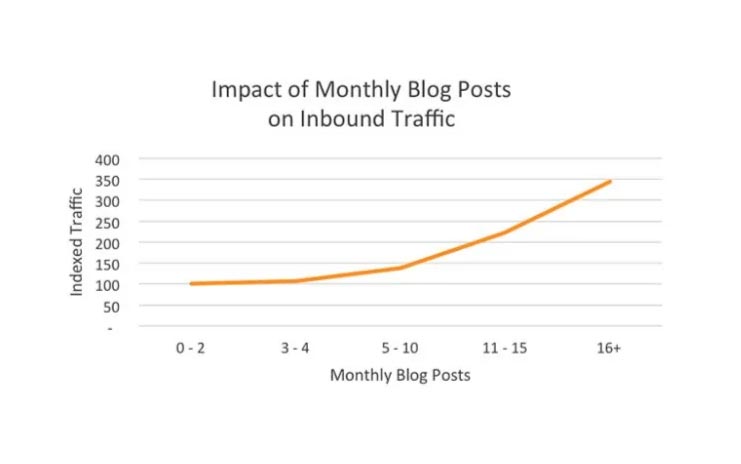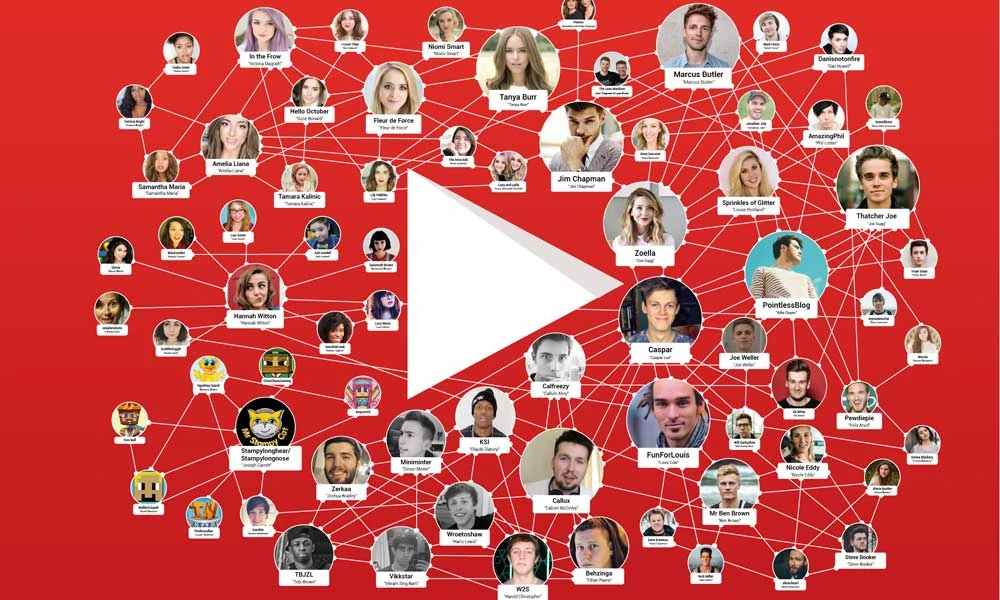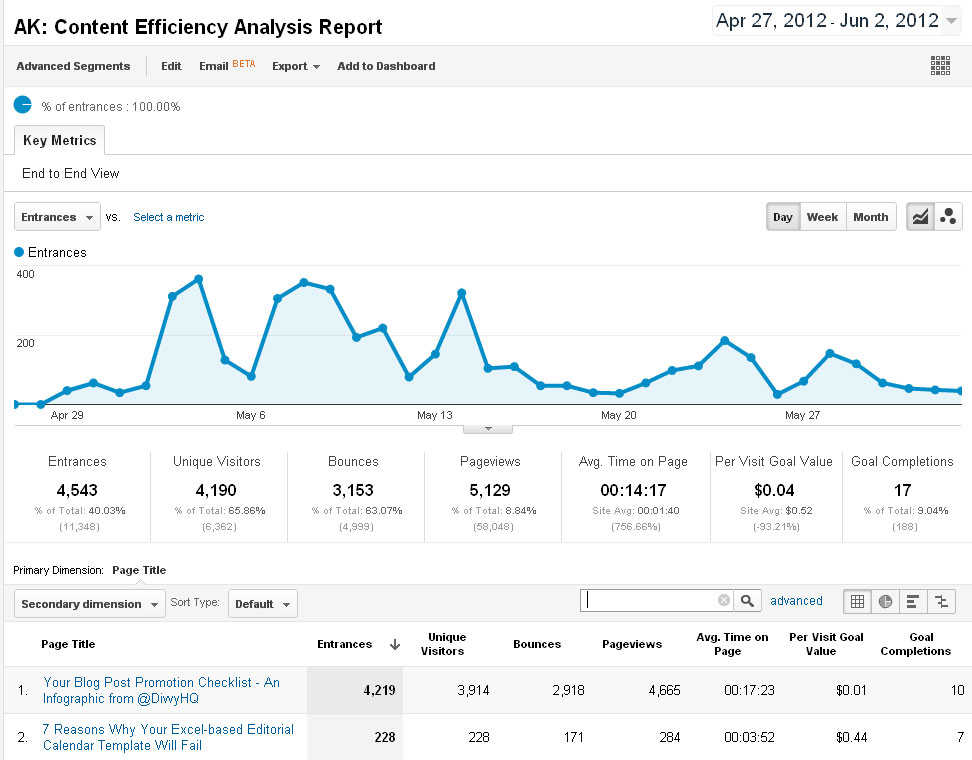13 Tips to Increase Blog Traffic Exponentially
You have a blog, don’t you? Good. Use this to create an audience, gain credibility, and increase income.
However, the thing is that just having a blog doesn’t cut it. Your brilliant words of wisdom will only be read if people visit your site.
Gladly, there are many ingenious ways to get more readers. Maybe you’re new to blogging, or your traffic is worse than s**t. This guide contains many tips that can transform your blog from a space into a busy site. Ready?
Table of Contents
Get Your SEO Sorted

Raise your hands if you want your blog to appear on page 587 of Google search results. Nobody? Thought so. Search Engine Optimisation (SEO) must be a priority from the beginning.
Keyword Magic
Doing proper keyword research is the building block for any good SEO strategy. These are the words and phrases that people type into Google when they are seeking content like yours.
For instance, imagine you own a fitness blog. Some possible keywords can include:
- How to ‘get abs.’
- Healthy meal prep ideas,
- At-home HIIT workouts,
Sprinkle your focus keywords in blog posts at locations such as:
- Title and headings,
- Body copy,
- Meta description,
- Image alt text
Don’t overdo it – too many keywords may lead to “keyword stuffing” penalties.
Tools such as Ahrefs, SEMRush and Moz can help you find the right keywords.
Site Structure and Technical SEO
In addition to keywords, there are lots of other SEO aspects that will boost your site:
- Optimise images and videos so they do not slow down your website speed
- Use descriptive URLs (e.g., www.yoursite.com/blog/healthy-meal-prep-recipes)
- Submit a sitemap to search engines
- Fix any broken links
Site structure and technical trickery might sound dull, but get it nailed, and search engines will be more inclined to show your content to the right people.
Make a Content Strategy
One-off blogs are all fine, but an actual content strategy works.
Your strategy should concentrate on:
- Creating keyword-targeted ‘pillar’ content which extensively covers core topics,
- “Cluster” articles that go into greater detail about subtopics;
- Content repurposing (e.g., blog posts transformed into video or podcast episodes).
With an integrated content strategy, you’re more likely to rank for related terms, keep people on your site longer, and establish yourself as an authority in your field. Win-win!
Lean Into Your Niche
Getting traffic is a massive part of getting your audience precisely what they want to see. That means you've got to dial into your niche BIG TIME.
Let's keep using the example of a fitness blog. Create content that speaks directly to the needs of your specific audience. For instance:
- New mums are getting back in shape
- Bodybuilders looking to bulk up
- Runners training for a marathon
Within that niche, become the go-to expert that people can rely on for spot-on information and advice. Build an engaged tribe of loyal fans who can't get enough of your content.
The key here is knowing your “avatar” (ideal reader) inside-out – their hopes, fears, pain points and questions. Do audience research through surveys, social media listening, reading other niche blogs/forums, and interacting 1-on-1. Then, soak up all those insights to produce ultra-valuable, targetted content.
High-quality, High-intensity Content

Listen up: the internet is awash with average, run-of-the-mill content that doesn't exactly set the world on fire. Your goal? Blow that mediocre nonsense out of the water.
We're talking detailed, in-depth blog posts that leave no stone unturned. Thoroughly research your topics and go into way more depth than your competitors. If they're writing 800-word posts, write a 3,000-word opus. If they're listing five tips, give readers 21 actionable strategies. You get the idea.
For example, here's a solid outline for an epic fitness blog post:
7 Ways to Get Shredded Six-Pack Abs
- Intro (explain why abs are so difficult/coveted)
- A section on nutrition (calorie deficit, macro split, foods to avoid, etc.)
- A section on workouts (HIIT vs weights, specific abs exercises, sample routine)
- A section on lifestyle (sleep, supplementation, neat tips)
- A section on motivation and mindset
- Conclusion
- FAQ section answering common questions
See? We cover the topic from every conceivable angle, leaving no questions unanswered. That's the sort of high-octane, value-packed content that gets shared and ranks well in search.
Formatting is Everything
There is not everything in it, but it certainly matters more than you think if you need people to read and relate to what’s on your posts.
Consider it; would you like a wall of text or a post with short paragraphs, bullet-pointed information and white spaces?
Precisely!
When drafting your content, these guidelines should be used:
- To break the content, use descriptive titles and subtitles
- Bulleted lists can easily be skimmed
- The same goes for numbered lists or step-by-step guide
- Bold and italics to highlight important words
- Also, break the monotony with relevant charts, images or videos
Your formatting should always be done well to make the content easier to read and visually attractive. Add-up points: It also helps SEO by checking boxes like image alt-text.
Be Prolific AF

Blogs mostly fail because owners get tired or they may need to post more.
That’s why it is essential to be prolific with your publication schedule. Do not just pound out a blog post every few months and wonder why no one reads it.
The most successful bloggers publish several times per week, sometimes daily; by doing this, you ensure your audience always has new content and feeds the Google algorithm.
However, these posts mustn’t be terrible if posted daily. Instead of writing much, focus on quality. Just ensure you remain busy to create momentum and engage returning visitors.
Oh, and here’s another hot tip. Repurpose, repurpose, repurpose! Transform a blog into a video, infographic, podcast episode or whatever medium goes best with it. In so doing, incrementally increase your content output without additional labour.
Go Nuts on Content Promotion
You've created an absolute masterpiece of a blog post. But what's next? Shouting about it from the rooftops, of course!
SEO is great, but you can't just sit back and magically expect thousands of people to rock up on your site. It would be best if you were proactive about content promotion.
For every piece of content you publish, create a strategic promotion schedule to share it across channels like:
- Social media (obvious biggies like Facebook, X, Instagram, TikTok)
- Your email list
- Relevant online communities like forums or Facebook Groups
- Asking for shares from industry influencers
Don't blast your post out once; call it a day. Repurpose and reshare your content multiple times through visual teasers, quotes, alternate headlines and more. Keep switching up the angle each time to maximise exposure.
Hot tip: research relevant hashtags and jump on trending topics/conversations so your content reaches new audiences.
Guest Post Like a Maniac

Want a surefire way to introduce your excellent content to new readers? Guest posting is the answer – and you'll want to become an absolute machine at it.
In short, you write high-quality posts to be published on other people's blogs (ideally those in your industry with a big, engaged following). You include a byline and bio linking to your site at the end of each post. Boom – new traffic unlocked!
Of course, you'll need to follow specific guidelines and quality standards set by each site you submit to. No worries, though; take those guidelines as an opportunity to level up your content. You're golden; follow the rules and submit something valuable and compelling.
Build an Engaged Community
Publishing great content is crucial, but it's only half the battle. If you want an explosive traffic snowball, you must foster an engaged community around your blog.
It starts by actively participating in the conversation. Don't just hit publish and ghost. Reply to every comment, join discussions in your niche, respond to audience questions on social media – be present and build real connections.
Remember: People don't just want to consume content passively these days. They crave interaction and a chance to be part of something bigger. Give them that tight-knit community feeling, and they'll return for more.
Take it a step further by nurturing evangelists for your brand:
- Do shoutouts to superfans who regularly engage with you
- Feature their user-generated content and stories
- Create an exclusive Facebook group or community platform
- Develop an “insider” loyalty program with premium content and perks
Those loyal devotees will happily amplify and promote your content for you. Talk about a traffic windfall!
Get off Your Blog and Collaborate

Your blog can only reach many people, even if you have a solid community. If you want exponential traffic gains, you must get off your turf and tap into other people's audiences.
How? That's how it works: through collaborations and co-marketing partnerships.
Find other content creators, brands or companies who share your target demographic but aren't direct competitors. Then package up your expertise into a:
- Guest podcast appearance
- Joint webinar or live video stream
- Expert interview or roundup post
- Co-authored pieces of gated content like an ebook
With the right partnerships, you're exposed to new circles of potential readers who may have never stumbled across your blog.
The key is to make it a mutually beneficial collaboration by promoting each other's offers and channelling new traffic back and forth. Approach partners with specific, fleshed-out ideas that clarify the value proposition.
Leverage Video Marketing
Video is still taking the online world by storm. If a picture is worth a thousand words, how much are videos worth? A billion? Two billion? You get the point.
This is why video marketing must be included in your blogging strategy. You will expand your reach, diversify traffic sources, and connect with audiences in new ways.
You could also complement your written posts with bite-sized video teasers for sharing on social media. Alternatively, you can produce in-depth video breakdowns that go further into topics on your blog.
Then upload those to a YouTube channel for extra power, only when it has been strategically optimised for siphoning views straight from YouTube searches to your blog. It’s a double-dipped traffic benefit!
Wrangle Your Email List

We talk about all these search engines, social media, and other traffic channels, but it’s easy to forget your most precious asset – an e-mail list.
Because you own the direct communication channel with your audience, you are not subject to algorithms or social feeds when you press ‘send’ on a newsletter email.
That’s why it’s essential to start fostering a good email list.
To get people to sign up, offer them high-quality, attractive deals such as free guides, workbooks, or email courses. It is always ideal to keep in touch:
- With links directing back to your latest blockbuster posts
- With exclusive curated content and insider tips
- With promotional offers along the monetisation funnel
Only some visitors will sign up for emails right away. However, you can collect them later using targeted tactics like exit-intent pop-ups and lead magnets placed strategically on different pages of your site.
On the other hand, pay attention to those who have already subscribed. Always ensure they receive value right into their mailboxes through the nurture sequence. This will continuously remind them of you, making it more likely for these subscribers to revisit and engage with your blog content again.
Eye-Catching Headlines That Pop
You could spend hours agonising over an exceptional opus of a blog post. It will not matter if your headlines are terrible.
Blog visitors and search engine users have notoriously short attention spans. The captivating headline often decides whether someone goes on to read the content or move on to something else.
When you form the title, ask yourself: is this a piece I would stop reading? Is it illustrating an irresistible portrait of the value within?
Below are some headline templates that never let me down:
- “#X ways to get [desired outcome]”
- “The simple (or surprising) truth about [topic]”
- “How to [verb] [adjective] [desirable result].”
- “Why [specific group] should take action.”
This could be spiced up with curiosity elements like:
- Contrarian viewpoints: “Why You Shouldn’t Be Doing The Above!”
- Numbered lists or statistics
- Strong adjectives or vivid descriptions
- Asking questions relatable to readers
- Instilling a sense of urgency in readers
Also, for headlines that attract more traffic, fear not about A/B testing them. You shouldn’t settle for any one mediocre title!
Analytics are Your BFF

How on earth will you know what’s doing it (and what's not) for you in terms of driving more traffic if you won't analyse the data?
Think of your website and blogging analytics tools as a fortune house worth its weight in gold. Here are some metrics that’ll keep you up at night:
- Pageviews are unique to give you a sense of general trends
- Take a look at top landing pages to find out what initial content is highest performing
- Bounce rate and average session duration for indicators of engagement
- Conversion rates for opt-in bribes and lead magnets
- Referral sources first, traffic channels second.
- What posts, headlines or subjects have generated the most responses?
Some things like peak traffic hours, geographic audience splits, and historical comparisons with the previous periods can be deeply investigated.
All this mouthwatering information from the analytics can guide you as you continue polishing and reorienting your content strategy based on your audience preferences.
FAQs to Increase Blog Traffic
What is the optimal frequency for publishing new blog posts?
Aim to produce at least 2-4 high-quality posts per week. More often than not, frequent posting increases chances of momentum creation, but with the caution that one should not compromise quality to have more.
How long should my blog posts be?
The typical word count for top-ranking posts is about eighteen hundred words. Nonetheless, long-form content that exceeds three thousand words attracts more views and social sharing. Always go in-depth rather than meet an arbitrary word count.
Which brings in more traffic – video or written content?
The most excellent content strategies mix both styles. Text contributes to SEO as videos engage viewers and encourage sharing. To maximise readership, accompany your epic blog post with a video version.
How long does it take for a blog to get significant traffic?
Patience is required because regular blogging typically takes six months to one year before exponential traffic gains are observed. At this point, you become the established authority in any field you choose.
How much time should I spend promoting my content compared to creating it?
Most experts suggest spending equal (if not more) time on promotion than creating the content itself. Therefore, a 50/50 or 60/40 split between producing and promoting content will do just fine.
What’s better for generating traffic – guest posting or social media marketing?
They both have value and are essential parts of any holistic approach. Start with guest posting on high-authority blogs to reach fresh audiences. Over time, however, the social channel may provide better compounding returns as your community expands.
How important is email marketing to increase blog traffic?
Very! Your subscriber list is an invaluable distribution platform where you can nurture leads and drive consistent blog visits from captive subscribers over time.
